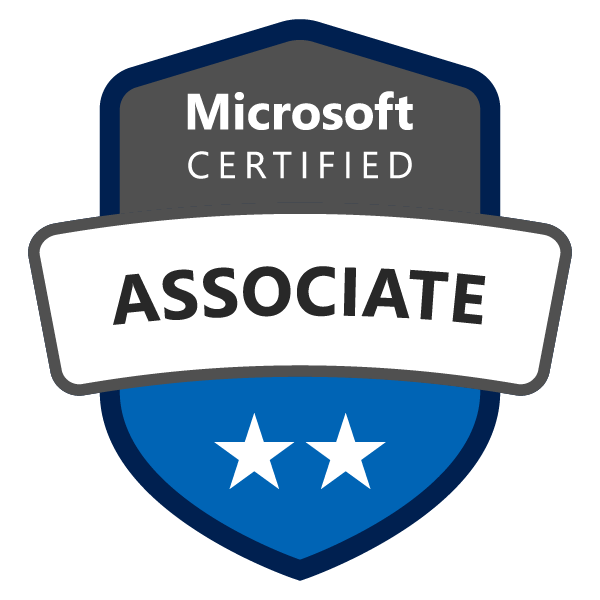Microsoft Power Platform Functional Consultant (PL-200)
- Per deelnemer: € 2.345,00 excl. BTW
- Examen Upgrade: € 205,00 excl. BTW
-
5 dagen
-
Max 16 deelnemers
- Direct inschrijven

 5 dagen
5 dagen

 Max 16 deelnemers
Max 16 deelnemers Met het Power Platform kan je bedrijfsprocessen automatiseren en beter en sneller in contact te komen met klanten. In deze PL-200 training leer je o.a. requirements vast te leggen en te vertalen, belanghebbenden te betrekken en Power Platform oplossingen en apps te configureren. Je vult je kennis aan met ‘hands-on labs’ om applicaties te verbeteren en om aangepaste gebruikerservaringen, systeemintegraties, dataconversies, aangepaste procesautomatisering en aangepaste visualisaties te creëren.
Power Platform bestaat uit vier belangrijke producten, namelijk: Power Apps, Power Automate, Power BI en Power Virtual Agents. In deze training gaan we dieper in op deze 4 toepassingen, met extra aandacht voor de Common Data Service, AI Builder, connectors en portals.
Deze training bereidt je voor op de rol van Power Platform Functioneel Consultant. Daarnaast bereidt deze training je voor op het Microsoft PL-200 examen. Na het behalen van dit examen beschik je over het certificaat: ‘Microsoft Certified: Power Platform Functional Consultant Associate’.
Twijfel je of jouw kennis/ervaring voldoende is om deel te nemen aan de training? Neem dan contact met ons op voor advies of bel 020 – 820 83 62.
De PL-200 training wordt gegeven in het Nederlands en Engels.
Microsoft Official Courseware, English, Digital – Microsoft Power Platform Functional Consultant PL-200. De lestijden zijn van 9.00 tot 16.30.
Wanneer je je inschrijft voor deze training kan je een Examen Upgrade toevoegen voor het PL-200 examen: “Microsoft Power Functional Consultant”. Je ontvangt dan een examenvoucher dat benodigd is voor het afleggen van PL-200 Microsoft examen. Je kan dit examen zelf online inplannen op een gewenste datum.
Wij zijn blij met jou als loyale cursist. Daarom ontvang je 5% loyaliteitskorting op onze trainingen wanneer je je inschrijft voor een volgende training. Meer info over loyaliteitskorting.
Wil je na deze PL-200 training een vervolgcursus volgen? Bekijk dan onze andere Microsoft Power Platform trainingen.
This module will provide the learner with background about the Power Platform and its 4 key components: Power Apps, Power Automate, Power BI, and Power Virtual Agents.
After completing this module, students will be able to:
In this module, students will learn more about the functional consultant role and the skills required to successfully implement a Power Platform solution for an organization.
After completing this module, students will be able to:
In this module, students will learn about creating a data model in Microsoft Dataverse, including importing data, using tabular reporting options, and configuring security. They will also learn about creating easy AI with AI Builder.
After completing this module, students will be able to:
In this module, students will learn the business value of the three types of Power Apps. They will then learn to how to configure and design them, including user experience considerations for each type of application.
After completing this module, students will be able to:
In this module, students will learn how to automate business processes using Power Automate flows, business process flows, and UI flows.
After completing this module, students will be able to:
In this module, students will learn how to automate customer interactions with a chatbot using Power Virtual Agents.
After completing this module, students will be able to:
In this module, students will learn how to work with Power BI Desktop and Power BI Service to analyze data and create visualizations.
After completing this module, students will be able to:
 Nieuwegein Taal: NL
Nieuwegein Taal: NL
 Online hybride training Taal: NL
Online hybride training Taal: NL
 Online hybride training Taal: EN
Online hybride training Taal: EN
 Nieuwegein Taal: NL
Nieuwegein Taal: NL
 Online hybride training Taal: NL
Online hybride training Taal: NL
 Online hybride training Taal: EN
Online hybride training Taal: EN
Kosten per deelnemer € 2.345,00 excl. BTW
Max. deelnemers: 16
De genoemde cursustarieven zijn per persoon, exclusief 21% BTW ( BTW nummer wordt vermeld op de factuur), inclusief alle actuele lesmaterialen, een naslagwerk (Pdf) en een certificaat van deelname. Er zijn dus geen bijkomende kosten achteraf.
Als je je aanmeldt met een groep van vijf of meer personen voor een cursus op jouw bedrijfslocatie (in-company), dan kunnen wij een aantrekkelijk groepstarief aanbieden. Voor informatie over onze groepstarieven kun je telefonisch via 020 – 820 83 62 contact opnemen of hier een offerte aanvragen.
Werkgevers
Als werkgever kun je de volledige opleidingskosten voor werknemers aftrekken als bedrijfskosten. Dit geldt voor de opleiding zelf, maar ook voor andere kosten als boeken, inschrijfgeld, administratiekosten, het certificaat of extra begeleiding. Bij SignOn zijn al deze kosten al bij de prijs inbegrepen.
Heb je vragen of wil je meer informatie? Neem dan vrijblijvend contact op via info@signon.nl of bel ons op 020 – 820 83 62.
Kies de lesmethode die het best bij je past. Deze training kun je op de volgende manieren volgen:
Meldingen